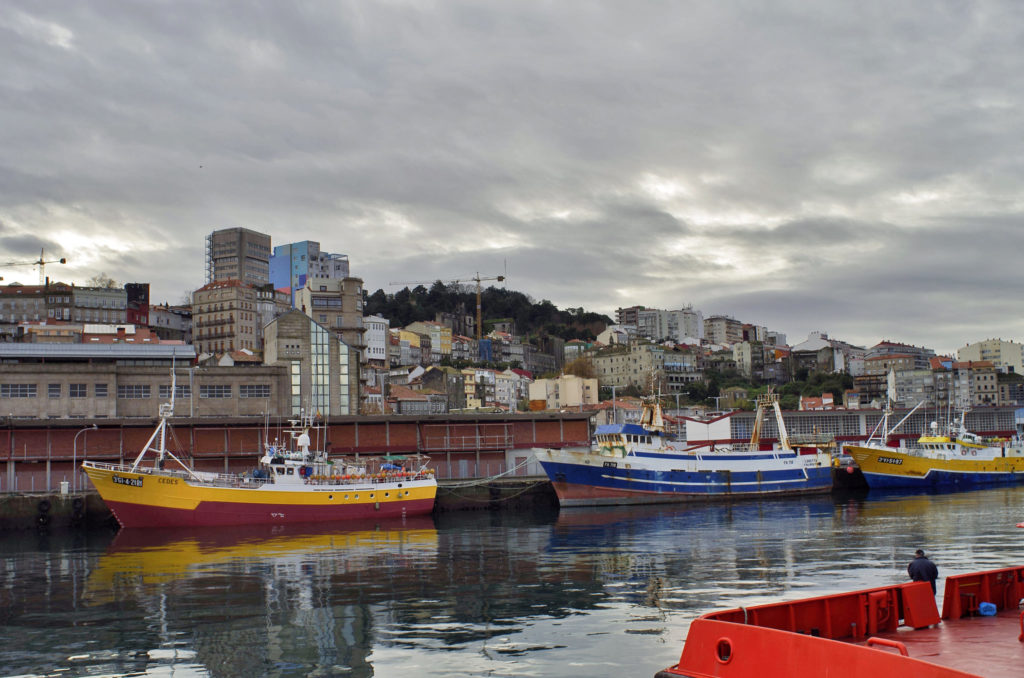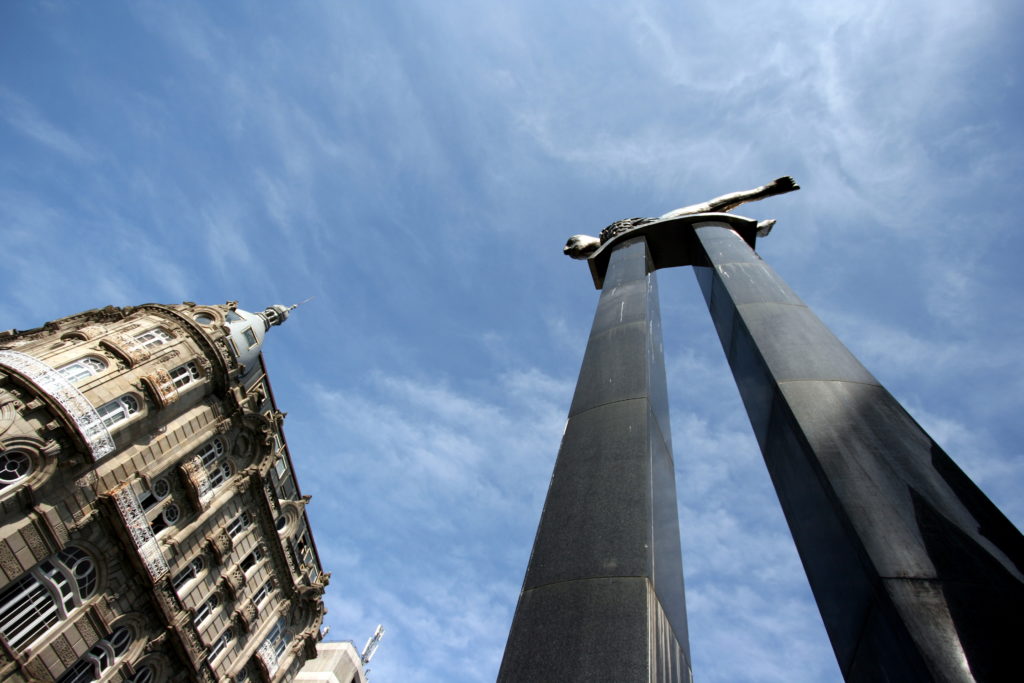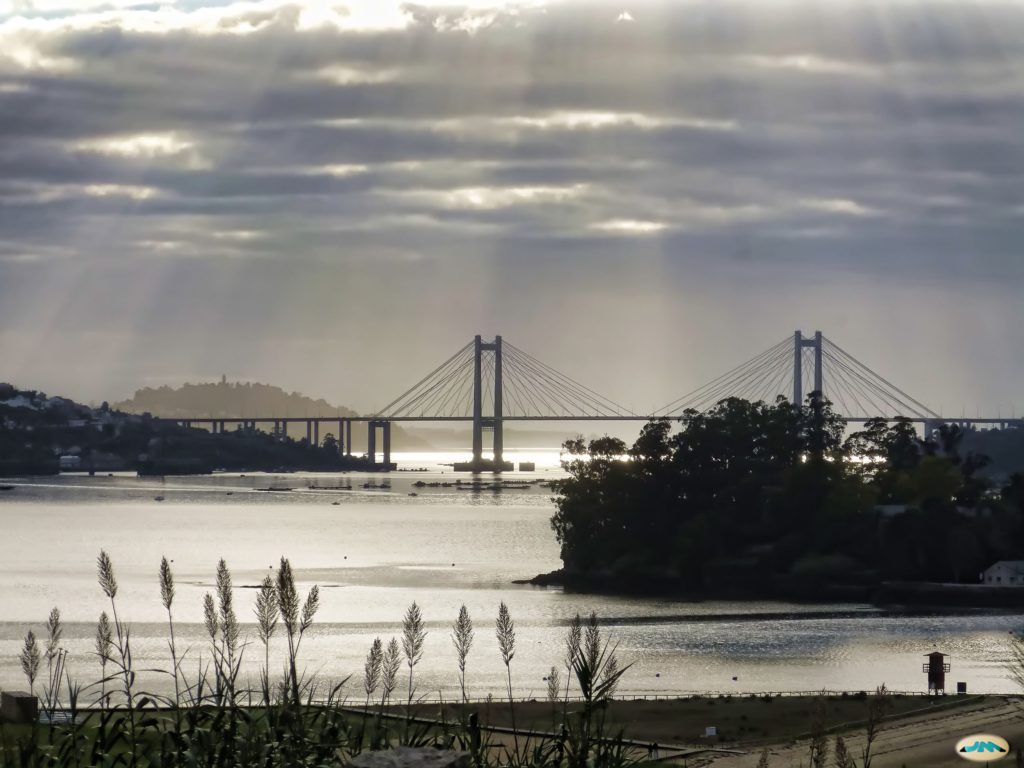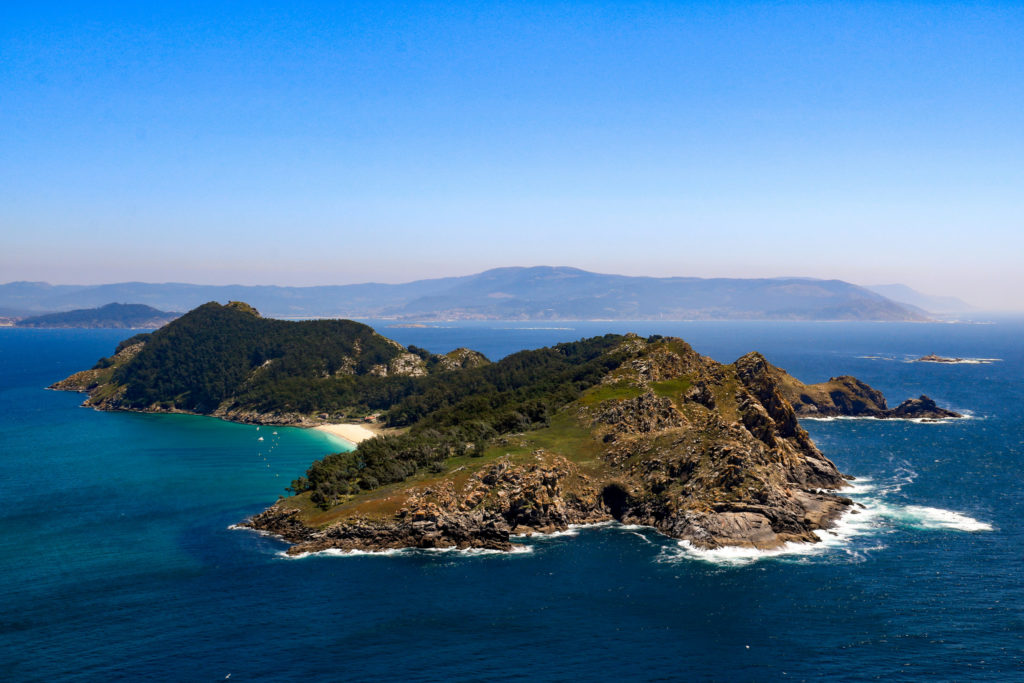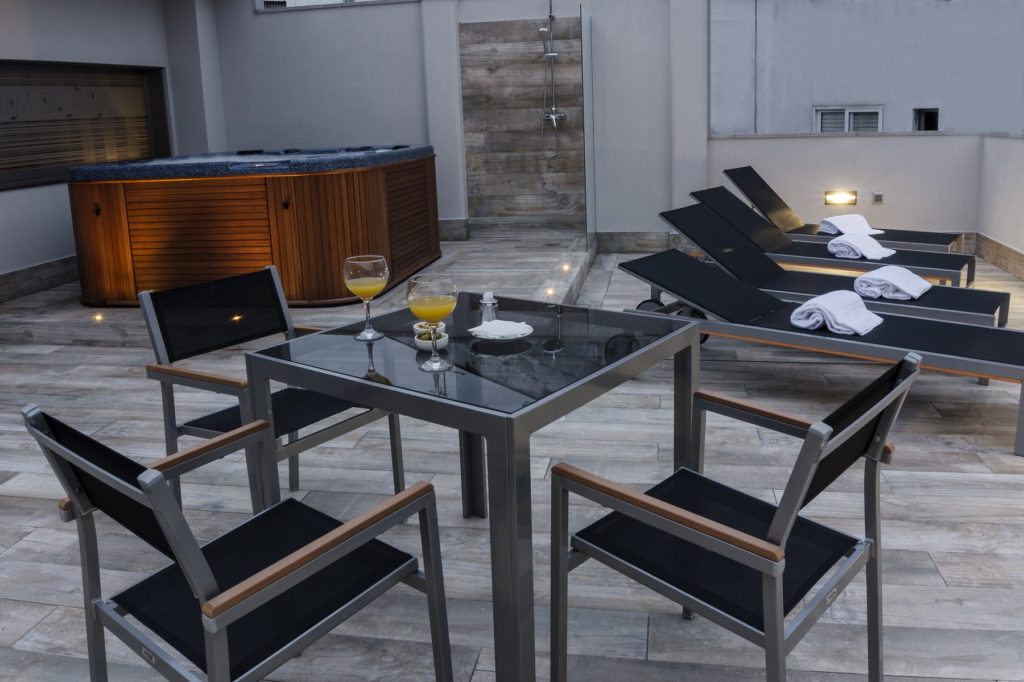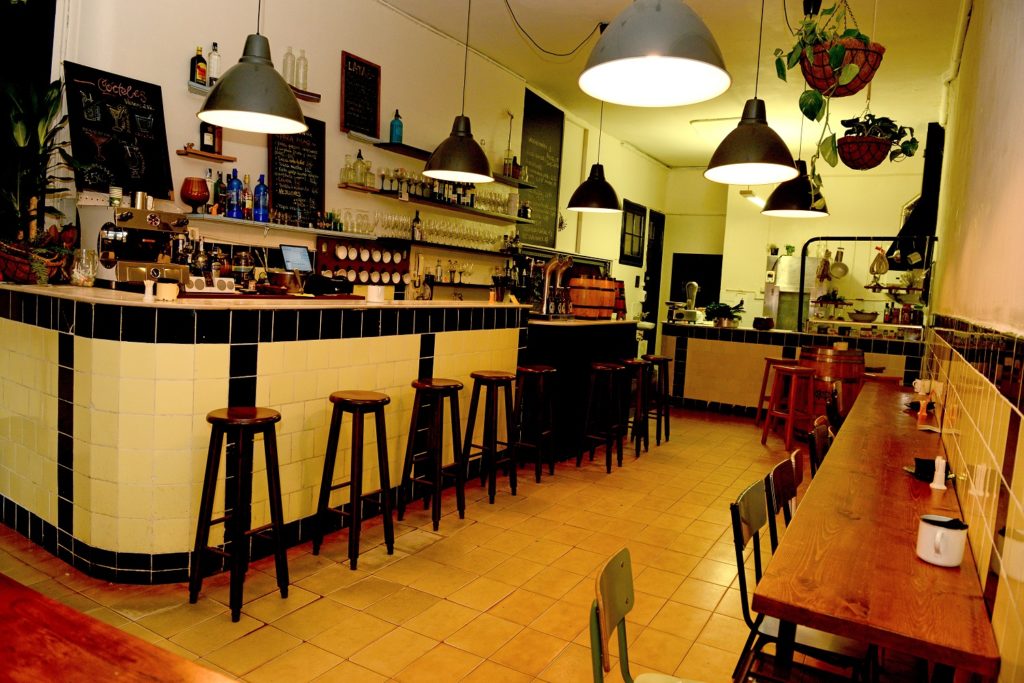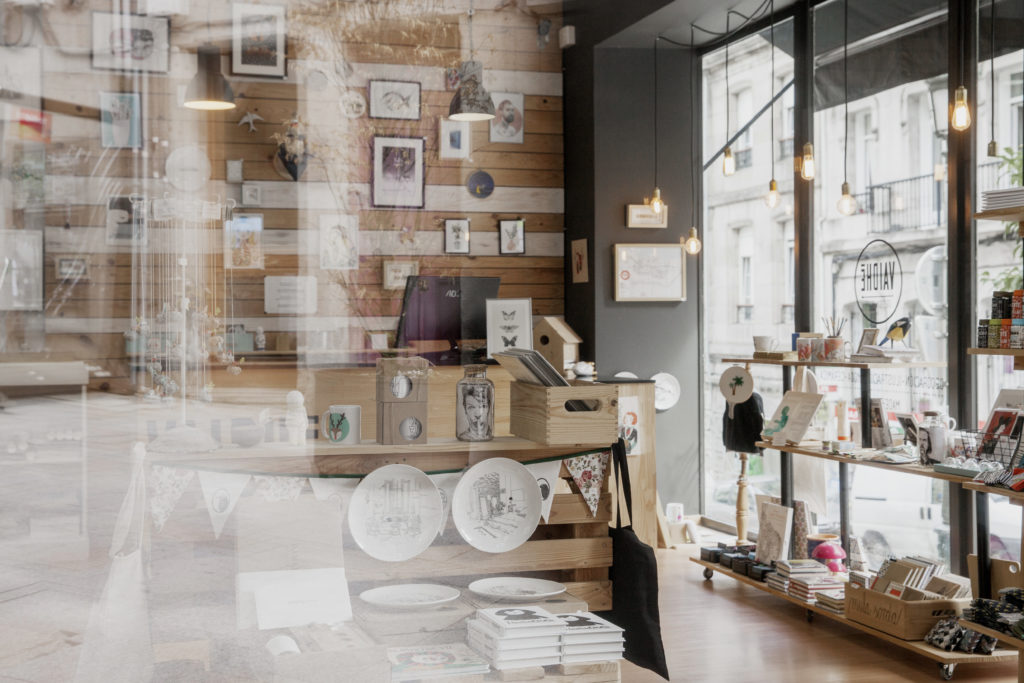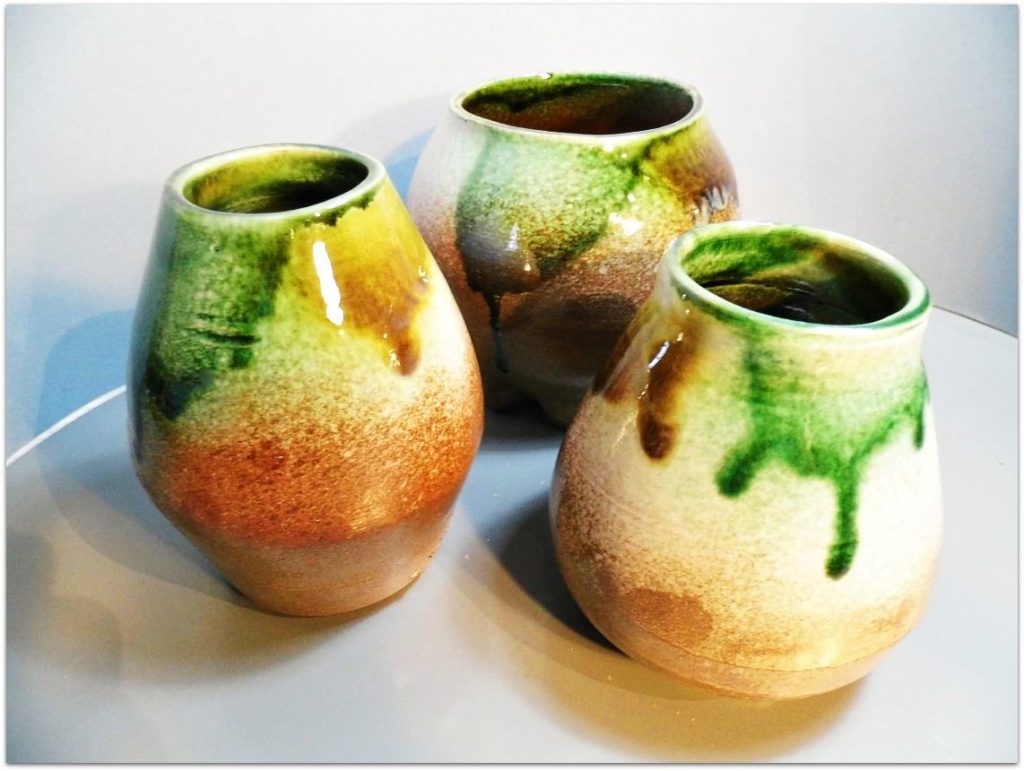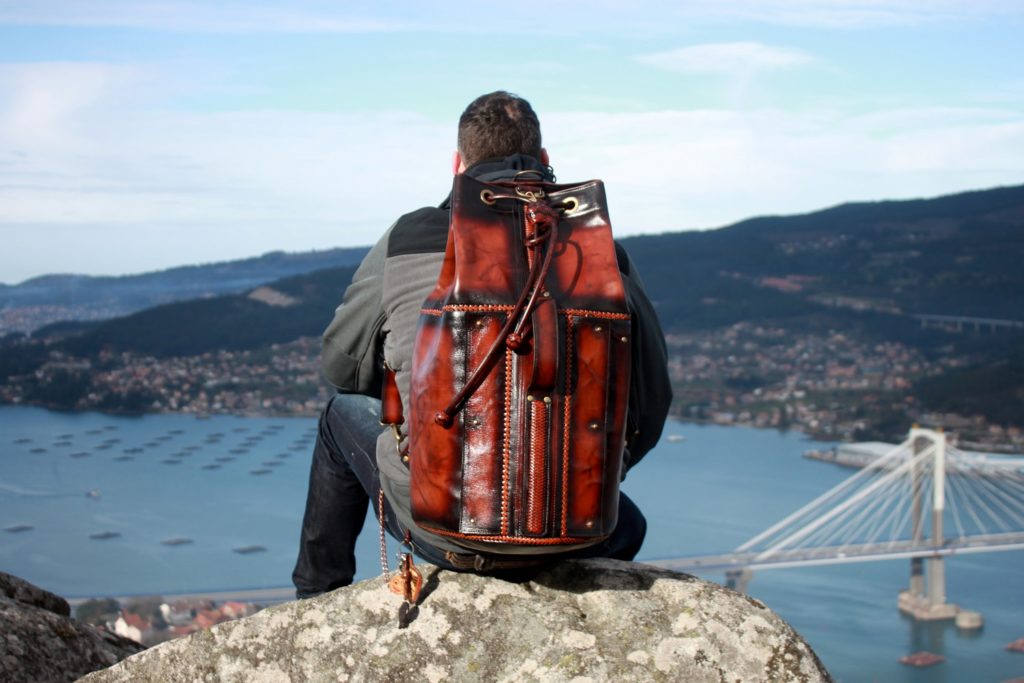A bustling port overlooking the Atlantic, visitors are welcomed to Vigo by a diverse urban landscape, stunning nature and the excellent Galician gastronomy.
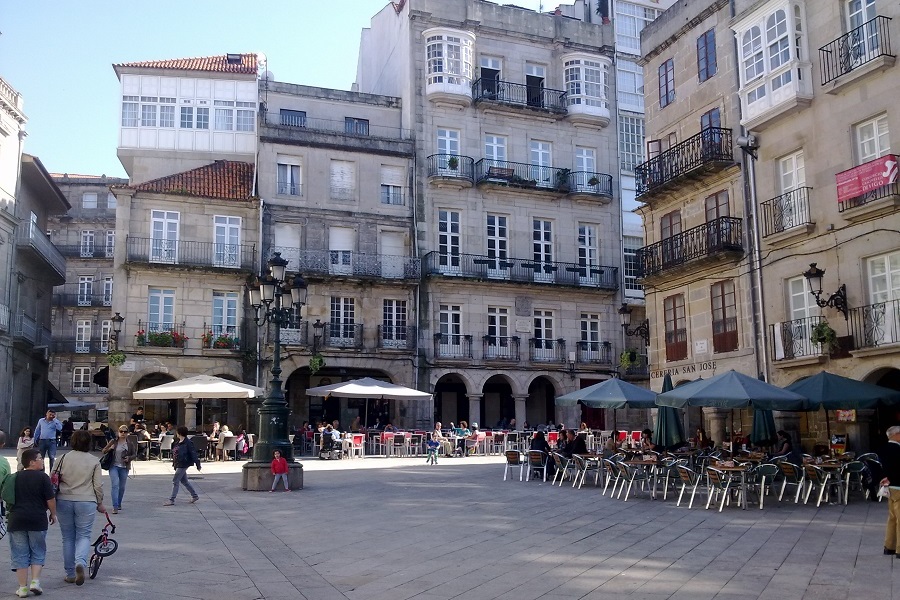
Praca de la Constitucion and its porticos (Photo: alexleiro via Wikimedia Commons)
The urban landscape of Vigo shows a city of many different faces. If the industrial port reflects the city’s maritime roots and entrepreneurial spirit, the old town that runs uphill from the waterfront has a village-like feeling to it. Next to it, stately buildings and large boulevards form the modern Ensache district, a commercial and cultural hub. A heady gastronomic scene and lively nightlife bring an indulgent edge to the city. Trips out of town are recommended during a three-day stay, with the Cíes Islands standing out as the area’s most striking natural treasure.
Vigo on foot
Easily reached from the city centre, the fortress on top of Monte Do Castro marks the best urban viewpoint over the city and Ría de Vigo estuary. On a lower slope, three anchors commemorate a sea battle which inspired local legends and literary works, while an archaeological site shows the remains of the initial Vigo settlement dating from the 3rd century BC.
A short walk from there is Praca Porta Do Sol, which opens onto the charming squares and paved streets of the Casco Vello (old town). The porticoes of Praca de la Constitucion make for a beautiful backdrop while sipping a coffee at one of the local cafes. Nearby, the church locally known as La Colegiata (Concatedral de Santa María de Vigo) guards Vigo’s most venerated religious relic. Relatively small and easy to walk around, this area has recently undergone a restoration process which is still ongoing, and its charm lies in the varied mix of quaint corners, tapas bars and restaurants, markets, and artisans’ shops.
The Casco Vello descends to the marina, where the panoramic terrace of the A Laxe shopping mall provides excellent vistas over the estuary, the cruise-ship port and the ferry boats leaving for the Cíes Islands. Further along the waterfront is a sculpture of Jules Verne, one of the city’s most curious monuments. Here, sitting on a giant squid, the French writer dedicated to ‘Vigo Bay’ a chapter of ‘20,000 Leagues Under the Sea’, drawing on the legend according to which a great treasure sank in the depths of the estuary during the Battle of Rande, fought in 1702 between Anglo-Dutch and Hispano-French fleets. Some believe the treasure is still down there, waiting to be found.
Leave the port behind to take a stroll around the modern and stately Ensanche district, where the eclectic architecture reflects the ascent of the city’s bourgeoisie between the 19th and the early 20th centuries. The pedestrian Rúa do Príncipe is lined with high street shops and home to the contemporary art gallery MARCO, while Rúa Policarpo Sanz is known as the ‘Golden Mile of Art’ for its many galleries and exhibitions.
Seafood, wine and markets
Food culture is deeply rooted in the Galician way of life, and Vigo is no exception. From sipping an aperitif before lunch to sampling tapas, from a churrasco (barbecue) at weekends to visiting a furancho in the countryside, it’s easy to pick up the local habits when it comes to eating and drinking.
The land around Vigo is generous with vegetables and meat products, but the real treats come from the ocean via the city’s bustling fishing port. In the old town, Rúa Pescadería is locally dubbed as ‘Oyster Street’. Other varieties of seafood are not to be overlooked either, including mussels, berberechos and the peculiar (and expensive) percebes. One of Spain’s most representative dishes, pulpo á feira is only one of the many ways of cooking the famed Galician octopus, while empanadas de pescado (fish pies) are also a must-try for fish eaters.
All the above is perfectly paired with a glass of Albariño, the region’s flagship wine. The production of this small and juicy variety of grape is concentrated in the wine-making area of Rías Baixas, some of whose cellars are conveniently reached from Vigo for visits and tasting sessions. There are four other wine regions in Galicia, producing a range of white and red wines.
As well as in tapas bars and restaurants, the local gastronomy can be discovered in Vigo’s markets. O Berbés and O Progreso are both historic markets which have been recently given a modern shake-up, hosting traditional stalls alongside street food joints, craft beer and cider taps, seating areas and cultural events.
Outside town
Bouzas is perhaps the most picturesque pueblo outside central Vigo. It’s just a 10-minute drive from the centre, but enough to take a break from the urban vibes and experience the atmosphere of a traditional fishing village. The local weekly market takes place every Sunday morning.
For a real getaway from the city, however, the Cíes Islands are the undisputed top attraction. White-sand beaches and turquoise water give this natural treasure an appeal reminiscent of Caribbean seascapes, while trekkers visit for the hiking paths and rich wildlife. A 45-minute boat trip from Vigo, the islands are open to a limited number of daily visitors, so permission is required and it is advisable to book the ferry ticket in advance. It is also possible to spend the night at the islands’ campsite.
But beautiful beaches can also be found on the mainland. Samil is the biggest and most popular, known to be the city’s family beach, while a number of smaller and more secluded spots dot the nearby coast. Forest parks surrounding Vigo provide many other options for a nature escape.
Accommodation
Located in the old town, Hotel Puerta Gamboa (Rúa Gamboa 12) is a good option for a comfortable stay within easy reach of Vigo’s main attractions. Its 11 rooms boast an elegant design and fine décor, in keeping with the 19th-century building which houses the hotel, and have private access to the original balconies overlooking Rúa Gamboa. Expect the attentive and personalised service typical of a family hotel.
Agua De Mar (Rúa Lepanto 12) is a modern boutique hotel located in a nine-storey building of the Ensanche district. Aimed at both business and leisure travellers, the hotel has a refined, minimalist design. Rooms range from single to suite deluxe, while the leisure areas include an outdoor terrace with Jacuzzi and sunbeds, a public lounge and an outdoor garden terrace.
Conveniently situated nearby the train and bus stations, Kaps Hostel (Rúa Emilia Pardo Bazán 12) provides a relaxing stay in a youthful and cosy environment. Both shared and private rooms are available and come complete with a simple and modern design. Facilities available include free WiFi, a left luggage office, video games rooms, a massage service – at an additional cost – and meeting rooms.
Pazo Los Escudos Hotel (Av. da Atlántida 106, 36208 Alcabre) is an exclusive hotel overlooking the ocean, located next to Do Carril beach. It offers guests a luxury stay surrounded by vast gardens, enhanced by a professional and highly-personalised service. The building shows elements of Galician construction and is home to an impressive collection of nobiliary shields, from which the hotel takes its name. A spa and a swimming pool are among the facilities available, while the rooms have spectacular views over the ocean or the gardens.
Restaurants and tapas bars
With nearly 90 years of history, El Mosquito (Plaza da Pedra 4) is the place to go to find excellent fish and seafood, served in a relaxed atmosphere. The menu presents both sharing and à-la-carte entries, reiterating Vigo’s tight bond to the sea by using the freshest products available. Traditional dishes are given a contemporary touch, while the Galician wines featured on the list offer ideas for pairings. A few dishes from the land are also available.
Taberna A Mina (San Vicente 8 bajo) is a great example of tradition keeping pace with the times. Founded in 1953, this typical tavern changed hands twice over the course of its history, without losing any of the spirit of its early days. The current management took over in 2015, rejuvenating it while respecting all that came before. Mussels are still the signature dish, served steamed or in the house sauce, but many other tempting options are listed on the menu. A classic in Vigo’s old town.
Maruja Limón (Rúa Montero Ríos 4) is a gourmet restaurant giving the regional traditions a modern and cosmopolitan twist. Galician roots and local products are the core of the menu, although modernised through a creative, playful and original approach. Minimalist wood and stone interiors and an open kitchen complete the experience, reflecting the informal yet refined gastronomic offer. Maruja Limón is Vigo’s only Michelin-starred restaurant.
Tapas Areal (Rúa México 36) is a tapas restaurant in central Vigo serving top quality ingredients in a youthful and modern environment. Empanadas, scrambles and skewers are some of the house specialities, while the rest of the menu includes cured meats, cheeses, salads, fish, seafood, meat dishes, desserts and a good selection of wine. Generous portions add to the variety of options available. The house tortilla is one to remember.
One wouldn’t think of burgers when it comes to typical Galician food, but things are changing quickly. As part of a little wave of burger joints which have sprouted in Vigo in recent years, Galeguesa (Rúa de Oporto 7) opened in 2015 to serve artisanal, organic and fully Galician burgers. The raw material comes from a farm in the southeast of the region, where the livestock is raised according to traditional methods and fed only with natural pasture and cereals. The menu lists around ten different burgers, as well as starters, sides and desserts.
Shopping
Rúa do Príncipe and the A Laxe shopping mall are Vigo’s commercial hotspots, but interesting gift ideas and made-in-Vigo souvenirs can be also found in other corners of the city.
VAIDHĒ (Carral 7 bajo) is the ultimate design shop in Vigo. It promotes small designers and talented creatives selected by Iris and Eli, owners of the shop and graphic designers themselves. They seek to convey values and ideas through a vast assortment of unique items made in Spain, which includes clothing, stationery, books and magazines, illustrations, and more. The place to go to find inspiration for original souvenirs and gift ideas.
Belén Soto Ceramica (Avda. Ramón Nieto 23) is a ceramic workshop turning clay into beautiful works of art with a functional format. Each piece is fully handmade, original and unique, ranging from pottery to décor, from tiles and plaques to board games and figures depicting typical local characters. Ceramic courses and workshops are also held at the studio, reflecting Belén Soto’s experience of over 20 years.
Another option to buy local is coIRaxe (Rúa de Ribeira do Berbés 37), where leather goods are made according to artisanal methods and designs. Responsibly-sourced materials and sustainable treatments are the core of the manufacturing process, which is undertaken entirely by hand. The collection of products includes bags, rucksacks, wallets, bracelets and bookmarks.
Many things have changed in the old town in recent times, but the baskets made by Antonio Suárez Dávila are still one of the most iconic sights. He’s often to be found weaving wicker at the shop, continuing a traditional craft which has nearly disappeared after the arrival of plastic and imported goods. Aptly located in Rúa Cesteiros (Basket Makers Road), Cestería Antonio Suárez displays handmade wicker products of all sizes and shapes.
If looking for an alternative to the high street brands located in Rúa do Príncipe, visit Mercado Progreso (Ronda De Don Bosco 41). In addition to the market stalls and food street joints, this multi-functional space is home to a number of pop-up stores, aimed at presenting up-and-coming products, brands and projects. Clothing, accessories, furnishings, art and design are among the most likely finds.
Nightlife
Teeming with bars serving cañas or cocktails, the old town is perfect for the beginning of the night (which, translated to Spanish timings, might be later than you’re thinking). The area’s nightlife can be explored by just wandering around and following the crowds, but a stopover in Praza da Igrexa is a must at weekends. One of the bars overlooking the square, La Colegiala, serves freshly-made Estrella Galicia coming straight from the brewery.
The area around Rúa Churruca is known for its rock bars and indie venues. The gigs and DJ-sets that are regularly hosted here span rock, pop, reggae and electronic music, featuring both local and international artists. Some of the venues to keep an eye out for are La Fábrica de Chocolate, La Iguana, La Casa de Arriba, El Ensanche and El Rincón de Los Artistas.
For trendier vibes and more commercial sounds, look for the venues located around Rúa do Areal and Rúa García Barbón, or head west along the coast to find the popular clubs of the Samil and Bediramar areas.
